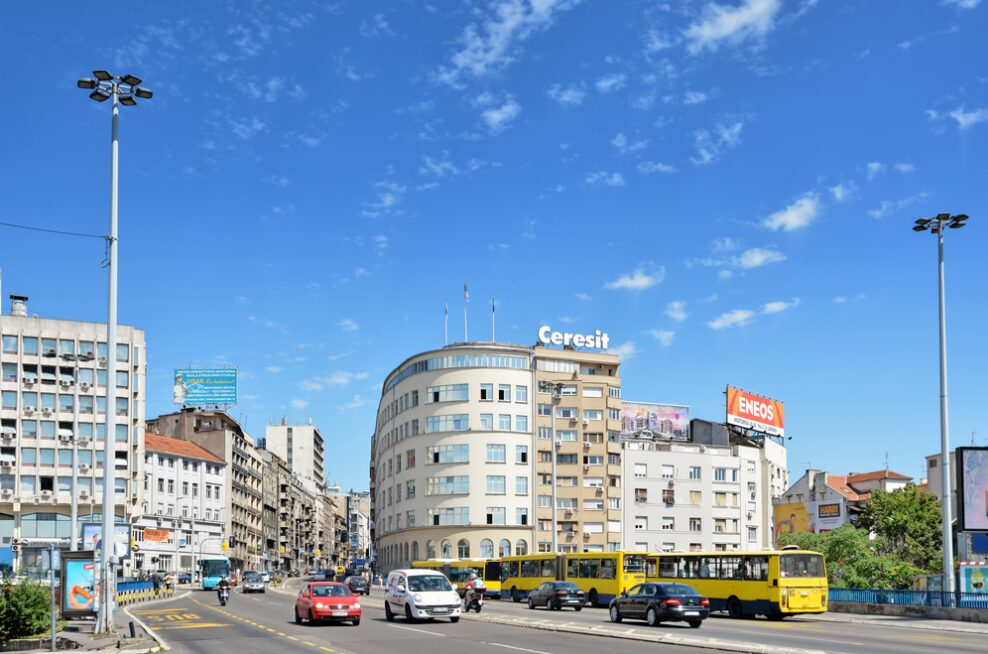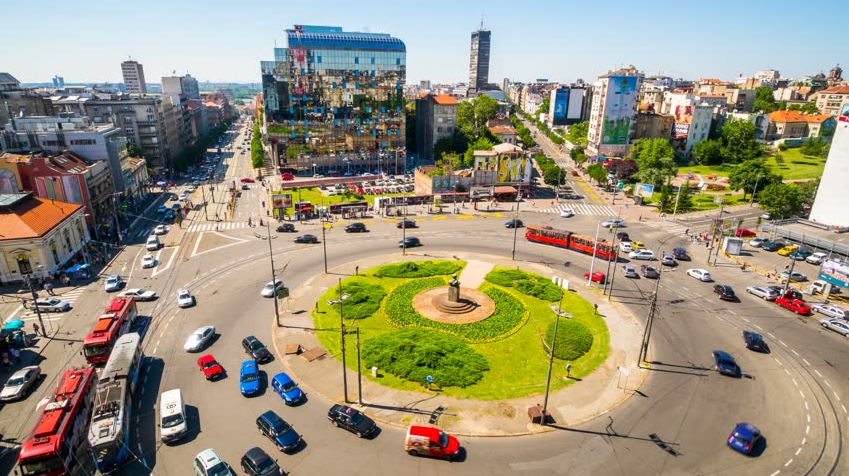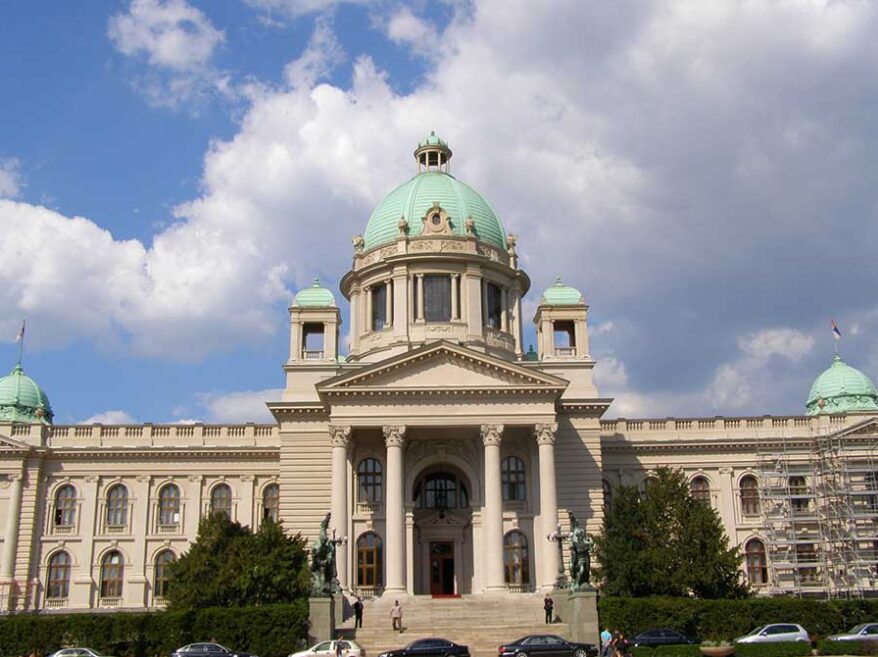Capital City of Serbia
Belgrade is the Capital city of Serbia and the largest and most populous city in the territory of the former Yugoslavia .Located at the confluence of the river Sava with the Danube and at the border of the Panonica Plain with the Balkan Peninsula , Belgrade extends over an area of ??3,222.68 km², occupying 3.6% of the territory of the Republic. The metropolitan area is home to a population of 1,756,534 inhabitants, representing 21% of the Serb population, and is therefore also the fifth most populous city in southeastern Europe, after Istanbul , Athens and Bucharest .
Belgrade is one of the oldest cities in Europe with a history dating back almost 7,000 years, often convulsed as it is the scene of clashes between the powers that successively dominated the region. The first settlements appeared with the prehistoric culture of Vinca towards the 4800 a. C. In the third century a. C. settled the Celts, and later, the Romans founded the city of Singidunum. The first documents containing the Beligrad Slavic name date back to 878. In 1284 it passed into the hands of the Serbs of Sirmia, and from 1403 onwards of the Despotic of Serbia. Later it was also capital of the Principality of Serbia, become Kingdom of Serbia in 1882.

Interesting facts about Belgrade:
History
Belgrade is one of the oldest cities in Europe , with a history of more than 700 years, was the capital of the former Yugoslavia . In its hectic past Belgrade has been conquered by 40 armies, and 38 times rebuilt from its ruins. It is located at the confluence between the Sava and the Danube and today is the capital of Serbia, with 1,600,000 inhabitants.
Do you want to know Capital City of Saudi Arabia?
Capital
Belgrade is the capital and cultural and scientific center in Serbia . In it are concentrated the institutions of greater national importance, both in the field of sciences as in the field of the arts. The Academy of Sciences and Arts (SANU), was created in 1886 as a real Serbian academy, the National Library was created in 1832 , the National Museum in 1841 and the National Theater in 1869 . The city also hosts the University of Belgrade , created in 1808 as a college,
Geographical distribution
Located at the confluence of the Sava River with the Danube and at the border of the Panonica Plain with the Balkan Peninsula, Belgrade extends over an area of ??3,222.68 km², occupying 3.6% of the territory of the Republic. The metropolitan area is home to a population of 1,710,000 inhabitants, 1 representing 21% of the Serb population, 3 4 being therefore also the fourth most populated city in southeastern Europe, after Istanbul, Athens, Sofia and Bucharest.

It has a first-rate importance as a point of communication and linkage of the railway and road networks, as well as an important international role with the airport, and also as a telecommunications center. In Belgrade there are important agricultural and industrial centers, especially in the field of metal, mechanics and the electronics industry, as well as shopping and banking centers.
Culture
In Belgrade is part of the most significant Serbian architecture, such as the Kalemegdan in the Belgrade Fortress , cultural monuments and many other cultural manifestations, as well as numerous archaeological remains, from prehistory to the present day, which testify to the existence of a Civilization and developed culture.
Museums of Belgrade
The most prestigious museum in Belgrade is the National Museum, founded in 1844 . It hosts a collection of over 400,000 exhibition objects, including foreign masterpieces. The famous Gospel of Miroslav is one of the pieces of his collection.
The Gospel of Miroslav, a medieval manuscript of the National Museum.
The Military Museum is quite popular with foreign tourists, partly because of the remains of F-117 shot down by Yugoslav anti-aircraft forces during the NATO bombing in 1999, but also for its more than 25,000 exhibits, some of which date back to the Period of the Roman Empire.

Yugoslav Aviation Museum, which houses more than 200 aircraft, of which about 50 are on display.
The Ethnographic Museum, founded in 1901 , contains more than 150,000 exhibits showing the urban and rural culture of the Balkans, especially the countries of the former Yugoslavia. It has about 160,000 original documents and 5,700 other objects.
Belgrade hosts many annual cultural events, including the FEST (Film Festival), BITEF (Theater Festival), BELEF (Summer Festival), BEMUS (Music Festival), Book Fair, Beer.
Culture
Theater culture has developed quite a bit in Belgrade. There are numerous theaters, of which the most important is the National Theater, together with the Yugoslav Drama Theater, the Zvezdara Theater, and the Atelje 212. The Academy of Arts and Sciences is also in Belgrade, as well as the Library National.
Sports
Belgrade has over a thousand sports facilities, many of which are multi-sport facilities.90 Recently Belgrade has hosted several important events such as the Eurobasket 2005, the European Men’s Volleyball Championship 2005 and the European Men’s Water Polo Championship in 2006. The city has also hosted the European Youth Olympic Festival in 2007, as well as the Universiade in 2009, where it won the Mexican city of Monterrey and Poznan.
Tourism
Belgrade’s historic neighborhoods and buildings are the main attractions of the city. These include: Skadarlija, National Museum of Serbia, National Theater, Zemun, Nikola Pašic Square, Terazije Square, Student Square, Kalemegdan, Knez Mihailova Street, Serbian Parliament, San Sava Temple , And the Old Palace.
There are many parks, monuments, museums, bars, restaurants and shops on the two banks of the Sava, such as the Mausoleum of the Unknown Hero in Avala (by Ivan Meštrovic), or the Mausoleum of Tito, called Kuca cveca (House of Flowers). The Topcider and Košutnjak parks are very popular, especially among tourists from the former Yugoslav republics.











